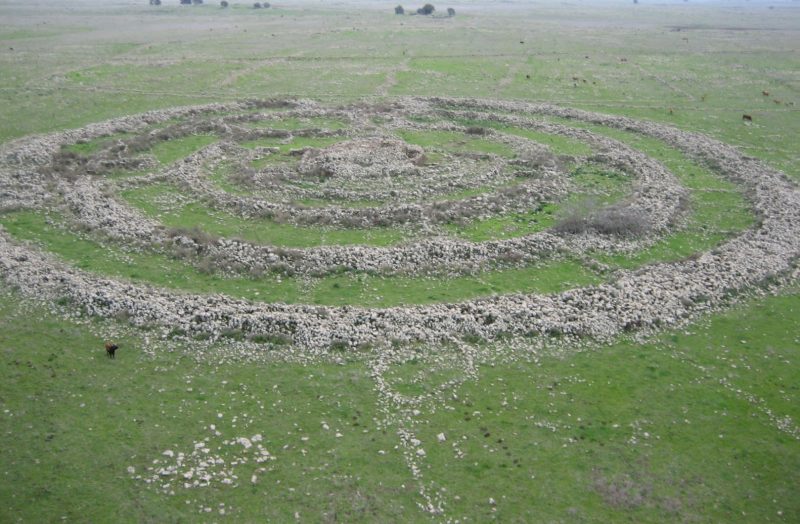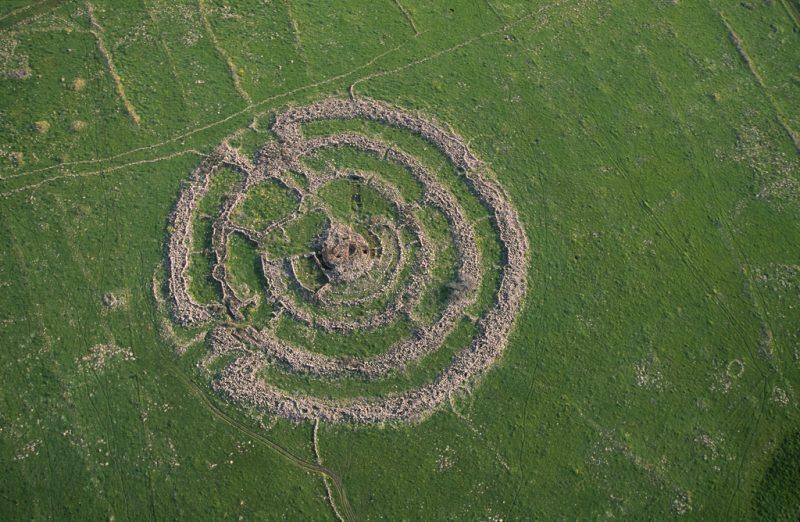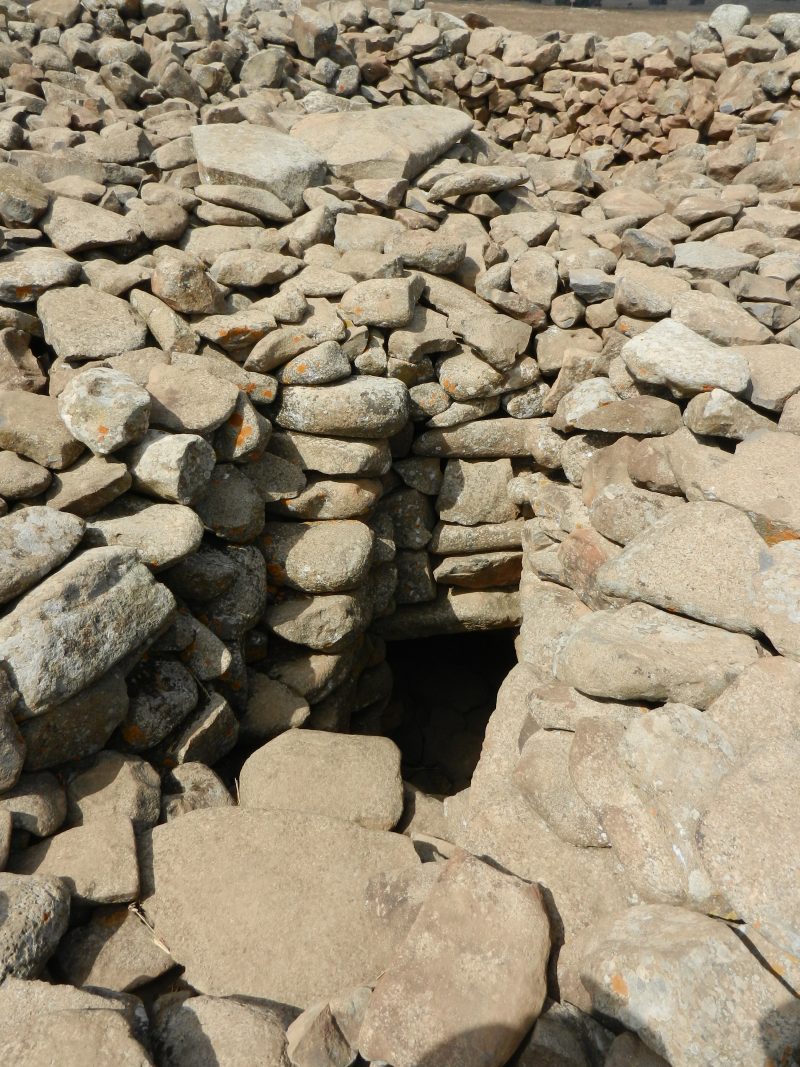
There is a large ancient megalithic monument laying at the Golan Heights (16 kilometers North-East of the Sea of Galilee) in modern day Israel. This is yet another mysterious stone circle complex left by our ancestors. The Arabic name of the location is Rujm el-Hiri which means “stone heap of the wild cat.” It is confirmed that the monument dates from around 3000 BC. This means that the monument is probably as old as Stonehenge.
The monument was first discovered during an archeological survey in 1967-68. The survey took place after the Six-Day War between Israel and a few Arabic States. Rujm el-Hiri has been described as the Stonehenge of the Levant (The Eastern Mediterranean countries)
The land upon which it stands is full of ancient dolmen tombs (single-chamber megalithic tombs, usually consisting of two or more megaliths supporting a large flat horizontal capstone, similar to a “table”). These dolmens were made long before the first big civilizations arose in Mesopotamia and Egypt. There is a similar story about this stone circles as for Stonehenge, that they were made by an ancient race of giants. That is why the modern Hebrew name for the place is Gilgal Refa’im meaning “Wheel of Giants”, referring to the biblical race of giants.

The Wheel of Giants consists of a 520-foot wide circle of basalt stones that encloses four smaller, concentric circles, of stacked stone walls. As you go closer to the center, the circles are becoming progressively narrower in width. The walls of the circles are connected by randomly positioned vertical small stone walls, at the angle of 90 degrees in relation to the circles. Te whole monument is made of a staggering 37,500 metric tons of stone that have been roughly carved. The walls are up to 6.6 feet high, and the outer walls are almost 8 feet high.
In the center of the structure, there is a big central tumulus (cairn) that is built of many smaller sized rocks. It is 65 feet in diameter and 15 feet tall. Inside the tumulus, there is a buried dolmen made of 5-foot tall standing stones that are the pillars of a large stone table. The dolmen lies on top of a chamber (or a cave) that is connected with a 10-foot long access hall. There were no human remains or artifacts found inside this structure (probably because it was looted), but nevertheless, some archeologists still think that the whole complex served as some kind of a burial ground for a major chieftain or important leader.

Similar to Stonehenge, this is not the only theory for the function of the monument. Some experts think that it was used as an astronomical calendar, a place that helped people to determine some natural phenomena as the longest and shortest day in the year. Others believe that it was a place where people gathered for worship rituals.
Another suggestion is that the place served as an early version of Dokhma (the tower of silence). Dokhma is a circular structure that was used by the Zoroastrians for “exposing the dead to the sky.” With other words, that was was actually a place where bodies were left for vultures to consume them. Zoroastrians are a religious group that appeared in the middle of the 6th century BC. After all the flesh was taken by the birds (excarnation), the bones were put in an ossuary. It is believed that the ossuaries were vessels for resurrection.
So far, this is the best theory, supported with facts and cultural references. There were hundreds clay ossuaries discovered at various nearby archeological sites dated to Chalcolithic times (Copper Age). The concentric walls of the complex, that are made progressively lower as you go closer to the center, allowed the vultures to easily view the bodies from perches above the walls. Relatively close to this area, at the Neolithic site of Catalhoyuk in southeastern Turkey, there is a shrine featuring a mural wall painting of vultures flying over headless corpses.
All that is said about the location are just theories. The Wheel of Giants is still a mystery that demands many more scholarly debates in order to be finally solved.
Source: nworeport, popular-archaeology